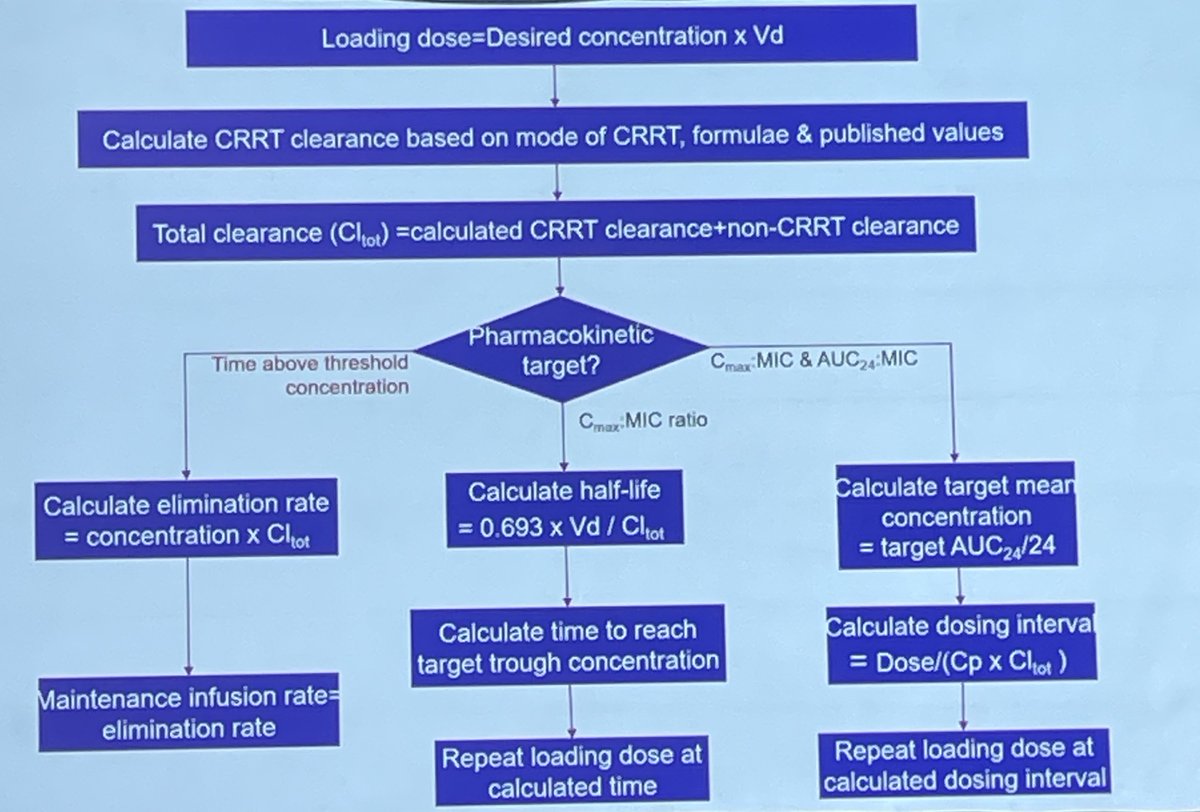
Next is Dr Gavin Joynt on 'CRRT in ICU - Individualised Antibiotic Dosing'
#CCSSA2022 #critcare #FOAMcc
#CCSSA2022 #critcare #FOAMcc
Appropriate blood and tissue concentrations of antibiotics is important, particularly in critically ill patients!
#CCSSA2022
#CCSSA2022
Trough concentrations in ICU patients on RRT show a failure in reaching the target in 26-72% of cases! See the SMARRT study from 2021 and DALI study in 2014.
doi.org/10.1093/cid/ci…
doi.org/10.1093/cid/ci…
#CCSSA2022
doi.org/10.1093/cid/ci…
doi.org/10.1093/cid/ci…
#CCSSA2022
Why this happens is complicated?
You have an increased volume of distribution, there is less protein to bind to so the free fraction is higher, and clearance goes up...
What this means is that it is difficult to predict what is happening...
#CCSSA2022
You have an increased volume of distribution, there is less protein to bind to so the free fraction is higher, and clearance goes up...
What this means is that it is difficult to predict what is happening...
#CCSSA2022
This is most relevant in (t>MIC) time dependent antibiotics (e.g. beta-lactams) and area-under-the-curve (AUC/MIC) antibiotics (e.g. vancomycin) and not so much concentration dependent antibiotics (e.g. aminoglycosides)
#CCSSA2022
#CCSSA2022
So how to give individualised dosing in patients on RRT?
The goal is to get a target blood concentration profile to mead optimal pharmacodynamics of the chosen antibiotics.
#CCSSA2022
The goal is to get a target blood concentration profile to mead optimal pharmacodynamics of the chosen antibiotics.
#CCSSA2022
Ideally should do it with real-time therapeutic drug monitoring, which is unfortunately impossible for many drugs in most centres.
Another approach is to adjust based on an algorithm - one such was published by Prof Joynt a decade ago.
Another approach is to adjust based on an algorithm - one such was published by Prof Joynt a decade ago.
The crux of it revolves around calculating clearance of critically ill patients, based on renal clearance, RRT clearance, and extrarenal (e.g. hepatic) clearance. Don't forget to use volume of distribution from critically ill patient data, not well patient data.
#CCSSA2022
#CCSSA2022

Problems with this are that there is incomplete published data on pharmacokinetics in critically ill patients for many of these drugs, and it has not been experimentally validated.
#CCSSA2022
#CCSSA2022
RT-TDM is probably the way to go, and TDM of beta-lactams is likely to become more readily available. This will allow us to give individualise dosing. Incorporate of machine learning models may aid in this
#CCSSA2022
#CCSSA2022
• • •
Missing some Tweet in this thread? You can try to
force a refresh





